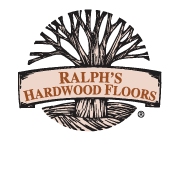The words “green” and “sustainable” are used frequently to describe eco-friendly products and are often seen not far from each other. These words are also used interchangeably to label “organic” commodities – from coffee filters to water bottles, even for hardwood floors!
But when it comes to hardwood floors, do they mean the same thing? The answer is yes and no.
Sustainability is based largely on how wood is sourced. When sourcing hardwood floors, it is considered sustainable if the tree is felled in such a way that the forest can recover and regrow. In contrast, “green” refers to sustainability, environmental responsibility, and waste management efforts. So, in its broadest sense, “sustainable” is a subcategory of “green.”.
The process of sourcing these materials can be indefinite, and it is also regulated by carrying the seal of the U.S. Forest Steward Council (FSC). FSC is a non-profit U.S. Forest Management Organization devoted to ensuring that forests are regrown, air and water quality are protected, and biodiversity is preserved. The stamp of approval from FSC indicates that forest operations have met 57 criteria ranging from protecting local wildlife to minimizing the use of toxic chemicals and even letting loggers unionize if desired. Wood products from forests living up to FSC’s standards bear the FSC logo and a “chain of custody” number for traceability to its source.
One of the most eco-friendly flooring options in the market is reclaimed flooring. Reclaimed wood is salvaged timber from old structures repurposed to create flooring. Typically, it is more expensive due to the extra labor required to retrieve the wood, clean it, re-mill if needed, and remove the nails that still may be embedded in the wood. Nevertheless, reclaimed flooring largely benefits the environment by helping curb deforestation by reducing the need to plant and harvest more trees. It keeps the wood from rotting or ending up in a landfill, and it perpetuates the reduce-reuse-recycle formula, which is a key concept in sustainability.
One thing to note is that sustainability is just one of many certifications that make a floor green. Over 600 labels are recognized by the flooring industry that indicate some “environmentally-friendly” attribute, with 36 relating to forest products. Many of these eco-labeling schemes show “sustainability,” revealing some criteria of what makes a product environmentally friendly. These include:
- Low Chemical Emission
- Energy efficient
For the product to be considered environmentally safe, it should improve or have no negative impact on the air quality in which the products are being used. Chemical emission levels should be within U.S. EPA’s (Environmental Protection Agency) standards. These refer to volatile organic compounds (VOC) found in adhesives, finishes, and even in hardwood flooring.
Floor insulation and non-toxic underlayment as noise and moisture barriers help reduce the need for non-renewable energy such as fossil fuel, making it “greener.”.
The words “green” and “sustainable” are, to some extent, related to one another but are two entirely different things.
If you’re interested in “green” or “sustainable” flooring, our experts can help make sure you get the right floor for your needs. Contact us at 920-984-3383, 800-354-9902 or info@ralphshardwood.com.















